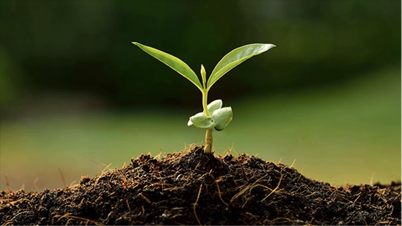
To the casual observer, all soil might look the same. The differences lie in the makeup of the soil and the nutrients that it holds. Planting your crops in the sand won’t give you the same results as sewing in rich topsoil or compost.
Whether you’re a backyard gardener or a full-time homesteader, understanding soil health can profoundly impact the health of your plants and your eventual harvest. What do you need to know about measuring soil health?
What Makes Up Healthy Soil?
Before we can start measuring the health of your soil, it’s important to understand the components that make soil healthy. It’s more than just the dirt under your feet. A stretch of healthy soil contains organic matter, beneficial microorganisms and necessary nutrients to help plants grow.
Healthy soil will also contain enough aggregate — pebbles, sticks, gravel and other slightly larger materials, that allow water to drain through the soil to keep plants hydrated but not waterlogged. There should also be enough space between the soil particles to allow air to move freely, not so much that the roots don’t have anything to grab onto during the growing season.
It sounds simple, but maintaining healthy soil is a delicate balancing act. The precise needs for a field or a garden might also vary depending on what each specific crop needs to thrive.
Testing for Soil Health
There are many different ways to test soil health and not all of them are scientific. For the basics, something as simple as sticking your hands in the earth and grabbing a couple of handfuls can tell you a lot.
Healthy soil should be dark in color and bind together easily. You should be able to spot things like wormholes and plant material such as old roots holding it together. Worms are also a good sign — their movements help aerate the soil and their waste adds nutrients.
Once you’ve exhausted the hands-on testing methods, it’s time to let science do the work. There are many different testing methods, depending on your need and budget. In most cases, you’ll gather a soil sample and send it off to the lab. The soil scientists at the lab will analyze your sample and send you a detailed report. It may include but isn’t limited to the sample’s chemical and biological makeup and other indicators of soil health such as nutrients.
Improving Soil Health
Once you’ve gotten your reports back, the next step is to take the necessary steps to improve the health of your soil before you start planting. The details of this step will vary depending on the results you received in the previous step. It could be as simple as introducing manure or compost to the soil before planting. If the field is deficient in one particular nutrient, introducing it to the soil by natural or artificial means can help prepare you to plant.
Planting companion crops that help maintain soil nutrition can also help improve soil health. Some crops, such as peas and beans, collect nitrogen from the air and fix it in the soil. Buckwheat can store both phosphate and calcium in the ground.
Also, consider the process of crop rotation. Crop rotation is an ancient process that involves changing the crops you plant in a particular field from year to year. With this process, your field doesn’t get drained of necessary nutrients and can be planted repeatedly without the need for artificial fertilizers or other chemicals.
Growing the Future
Agriculture as an industry is essential to the continuation of the human race. Homesteaders and backyard gardeners might not be trying to feed the world, but knowing how to measure and maintain the health of your soil can make generating a productive crop easier, if not simple.
Bio:
Jane is an environmental writer and the founder and editor-in-chief of Environment.co where she covers sustainability and eco-friendly living.
